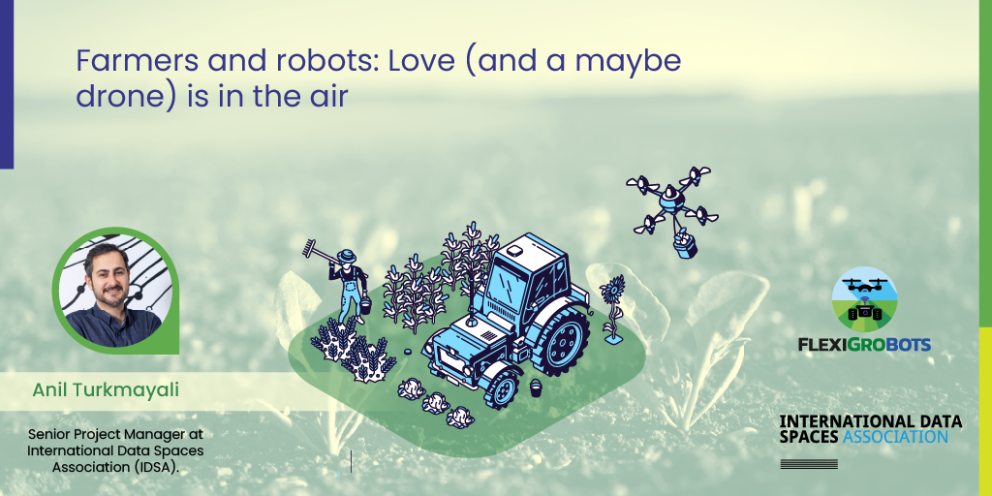Robots that help farmers? In harvesting, sowing and supporting the farmer make decisions? That sounds more like a scene in a science fiction movie than reality in the agricultural industry. But robots picking blueberries in Lithuania and harvesting grapes in Spain are just two examples of a project launched in 2021. FlexiGrobots creates a framework for multi-robot systems to automate agriculture operations. Robots on the ground and drones in the air can benefit farmers around the world in a variety of ways.
The project is creating a state-of-the-art platform for fast and effective robotic applications. The platform will help coordinate robot tasks and performances, support robot activities (including robots modifying their actions in response to real-time data from multiple sources) and allow efficient data processing. In its agricultural data space, data services enable data collection, integration and sharing.
Currently, agriculture lacks accurate data about fields and crops to inform robotic systems deployed in the field. The project seeks to address this via the use of IDS architecture, that provides the foundation for data sharing with multiple data providers and data consumers.
IDS-compliant agricultural data space and marketplace
In the IDS approach, standards and technologies are domain-independent - they are designed to be easily applicable across all industries. Many R&D projects use the IDS standard as the backbone of their architecture. By using an open, vendor-neutral design for a peer-to-peer network with control over data usage, IDSA ensures secure data sharing and data sovereignty. Its reference architecture is an indispensable element for a trusted data sharing infrastructure in Europe, enabling all kinds of data spaces, data sharing ecosystems and data marketplaces. Projects from a wide range of industries, including mobility, manufacturing, automotive, smart city, energy, etc. have adopted the IDS approach. This way of data sharing is highly beneficial to every sector.
This is also true for the agriculture and agri-food industry. By nature, the agriculture business is connected to numerous sources of data (weather, crop production, environmental, food consumption, etc.), therefore the secure sharing of data opens new business opportunities and creates new value propositions for all stakeholders. It also enables visibility and secure traceability of data transactions, that are among the key requirements of the European Commission’s Farm to Fork strategy (Farm to Fork Strategy: europa.eu).
In a data marketplace in agriculture, many innovative ideas and potential businesses may emerge from the correlation of various data sources (farming, humidity, economy, geosciences, population, urban planning, transportation, elevation, livestock, etc.).
Four key elements for a successful data space
There are these key points to consider for a data space:
- Trust: Actors in data space (data provider and data consumer) need to trust each other. IDS standards and specifications ensure this trust (particularly via certification of core components and operational environments).
- Interoperability: Potential interoperability issues in technical and business processes must be addressed. A common language for communication between the actors of a data space needs to be agreed upon (use of common vocabularies and ontologies specific to the industry; IDS Information Model is a good place to start here).
- Legal framework: The actors in a data space need a legal framework to perform their operations including data usage contracts and usage control rules. (Position Paper: Usage Control in IDS)
- Governance models: Models of governance need to be developed and provided (IDS Rulebook v1.0 is a good starting point, and a new version of v2.0 will be released by the end of 2022).
Becoming IDS-compliant would be a way to tackle these challenges. How can existing solutions become IDS-compliant? All projects that want to implement IDS standards are advised to check the specifications listed on IDS-G to find out whether they fulfill the requirements. IDS Certification is the best way to ensure IDS compliancy. Then the robots can do the rest!

